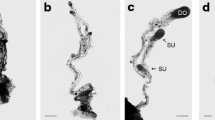Abstract
Background
Egg hatching in Meloidogyne incognita is a highly regulated developmental event and is strictly correlated with temperature. It has been demonstrated that exposure of M. incognita eggs to low temperature seriously affects their embryonic development. On the other hand, clear evidence has shown that M. incognita is able to overwinter at subzero soil temperatures in certain open fields. Therefore, subtle physiological and genetic adaptations may occur in M. incognita to minimize freezing injuries.
Objective
A growing body of evidence indicates that cold acclimation plays a large role in an individual organism’s ability to cope with freezing-induced cellular damage. Given the decreasing temperatures in late autumn or early winter, we hypothesize that natural cold acclimation occurring during these periods may assist M. incognita in overwintering.
Methods
Transcriptomic analysis and functional enrichment analyses were used to identify and annotate differentially expressed genes (DEGs) in acclimated eggs. The expression of DEGs involved in signal transduction and protein assembly was subsequently validated by reverse transcription quantitative PCR (RT-qPCR).
Results
Relatively long-term preacclimation at 4 °C significantly accelerated the hatching of M. incognita eggs that were subjected to freezing at − 1 °C. Using a transcriptomic approach, we further identified 686 and 460 up- and downregulated transcripts, respectively, in pre-cold-acclimated eggs. Additionally, we used Kyoto Encyclopedia of Genes and Genomes (KEGG) pathway and Gene Ontology annotations for functional enrichment analyses of the differentially expressed genes (DEGs).
Conclusion
The phenomenon in which M. incognita safely overwinters at subzero soil temperatures in certain areas may be attributed to the natural cold acclimation occurring in late autumn. Here, the identification of DEGs between acclimated and nonacclimated eggs will provide us with promising directions for future studies on the mechanisms of M. incognita freezing tolerance.






Similar content being viewed by others
References
Abad P, Gouzy J, Aury JM et al (2008) Genome sequence of the metazoan plant-parasitic nematode Meloidogyne incognita. Nat Biotechnol 26(8):909–915
Ali F, Wharton DA (2013) Cold tolerance abilities of two entomopathogenic nematodes, Steinernema feltiae and Heterorhabditis bacteriophora. Cryobiology 66(1):24–29
Ali F, Wharton DA (2015) Infective juveniles of the entomopathogenic nematode, Steinernema feltiae produce cryoprotectants in response to freezing and cold acclimation. PLoS ONE 10(10):e0141810
Chen Y, Jiang JF, Chang QS et al (2014) Cold acclimation induces freezing tolerance via antioxidative enzymes, proline metabolism and gene expression changes in two chrysanthemum species. Mol Biol Rep 41(2):815–822
Forge TA, MacGuidwin AE (1990) Cold hardening of Meloidogyne hapla second-stage juveniles. J Nematol 22(1):101–105
Hussey RS, Barker KR (1973) A comparison of methods of collecting inocula of Meloidogyne spp., including a new technique. Plant Dis Rep 57:1025–1028
Melakeberhan H, Ferris H, McKenry MV et al (1989) Overwintering Stages of Meloidogyne incognita in Vitis vinifera. J Nematol 21(1):92–98
Smith T, Wharton DA, Marshall CJ (2008) Cold tolerance of an antarctic nematode that survives intracellular freezing: comparisons with other nematode species. J Comp Physiol B 178(1):93–100
Starr JL, Jeger MJ (1985) Dynamics of winter survival of eggs and juveniles of Meloidogyne incognita and M. arenaria. J Nematol 17(3):252–256
Storey KB, Storey JM (2013) Molecular biology of freezing tolerance. Compr Physiol 3(3):1283–1308
Taylor AL, Sasser JN (1978) Biology, identification and control of root-knot nematodes (Meloidogyne species). North Carolina State University Press, Raleigh (NC)
Vrain TC (1978) Influence of chilling and freezing temperatures on infectivity of Meloidogyne incognita and M. hapla. J Nematol 10(2):177–180
Vrain TC, Barker KR, Holtzman GI (1978) Influence of low temperature on rate of development of Meloidogyne incognita and M. hapla larvae. J Nematol 10(2):166–171
Wang YZ, Liu C, Ren P et al (2020) Pre-cold acclimation promotes cryoprotectant accumulation and enhances freezing tolerance of Meloidogyne incognita. J Phytopathol 168(6):337–341
Wharton DA, Brown IM (1991) Cold-tolerance mechanisms of the antarctic nematode Panagrolaimus davidi. J Exp Biol 155:629–641
Wharton DA, Judge KF, Worland MR (2000) Cold acclimation and cryoprotectants in a freeze-tolerant Antarctic nematode, Panagrolaimus davidi. J Comp Physiol B 170(4):321–327
Wu XJ, Zhu XF, Wang YY et al (2018) The cold tolerance of the northern root-knot nematode, Meloidogyne hapla. PLoS ONE 13(1):e0190531
Young MD, Wakefield MJ, Smyth GK et al (2010) Gene ontology analysis for RNA-seq: accounting for selection bias. Genome biol 11(2):R14
Acknowledgements
We would like thank Biomarker Technologies Corporation (Beijing, China) for technical support and assistance with data analysis. This work was supported by Talents Program of Shaanxi Academy of Sciences (2019K-17) and Natural Science Foundation of Shaanxi Province (2019JQ-992).
Author information
Authors and Affiliations
Corresponding authors
Ethics declarations
Conflict of interest
The authors have no conflict of interests to declare.
Human and animal rights
This study does not involved human participants and/or animals.
Additional information
Publisher's Note
Springer Nature remains neutral with regard to jurisdictional claims in published maps and institutional affiliations.
Rights and permissions
About this article
Cite this article
Wang, Y., Chen, Z., Yang, Y. et al. Transcriptional reprogramming caused by cold acclimation in Meloidogyne incognita eggs. Genes Genom 43, 533–541 (2021). https://doi.org/10.1007/s13258-021-01069-0
Received:
Accepted:
Published:
Issue Date:
DOI: https://doi.org/10.1007/s13258-021-01069-0




